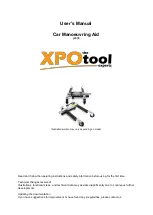
11
www.tensmachineuk.com Telephone: 0161 429 7330
INTRODUCTION
This EMS unit is used for muscle stimulation. The device is provided with
controllable output channels, each independent of the other. A pair of electrodes
can be connected to each output channel. An independent switch controls the
intensity level and settings.
EXPLANATION OF EMS
Electrical Muscle Stimulation is an internationally accepted and proven way of treating
muscular injuries. It works by sending electronic pulses to the muscle needing treatment;
this causes the muscle to exercise passively.
It is a product derived from the square waveform, originally invented by John Faraday in
1831. Through the square wave pattern it is able to work directly on muscle motor neurons.
The EMS has low frequency and this in conjunction with the square wave pattern allows
direct work on muscle groupings. This is being widely used in hospitals and sports clinics
for the treatment of muscular injuries and for the re-education of paralyzed muscles, to
prevent atrophy in affected muscles and improving muscle tone and blood circulation.
HOW EMS WORKS
1. Relaxation of muscle spasms
2. Prevention or retardation of disuse atrophy
3. Increasing local blood circulation
4. Muscle re-education
5. Immediate post-surgical stimulation of calf muscles to prevent venous thrombosis
6. Maintaining or increasing range of motion
The EMS units send comfortable impulses through the skin that stimulate the nerves in the
treatment area. When the muscle receives this signal it contracts as if the brain has sent
the signal itself. As the signal strength increases, the muscle flexes as in physical exercise.
Then when the pulse ceases, the muscle relaxes and the cycle starts over again,
(Stimulation, Contraction and Relaxation.) Powered muscle stimulators should only be
used under medical supervision for adjunctive therapy for the treatment of medical
diseases and conditions.












































